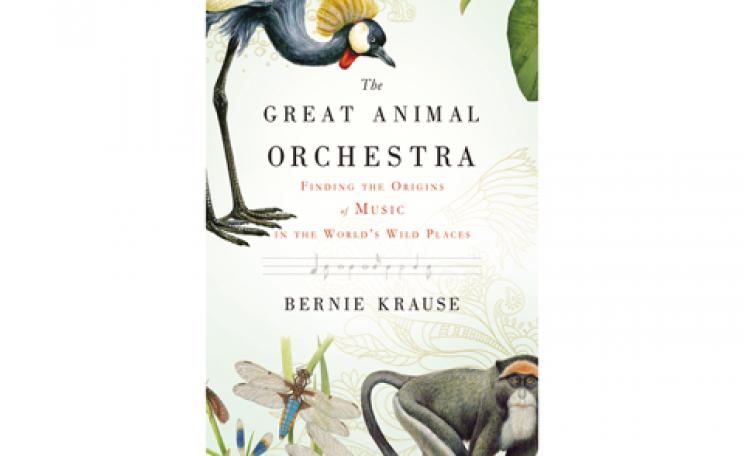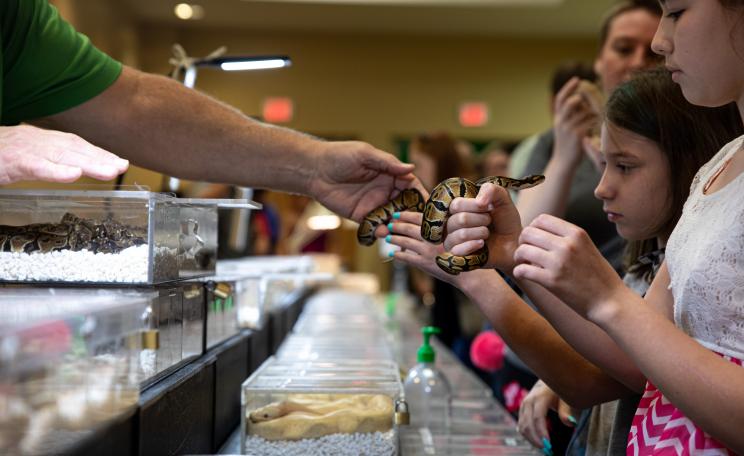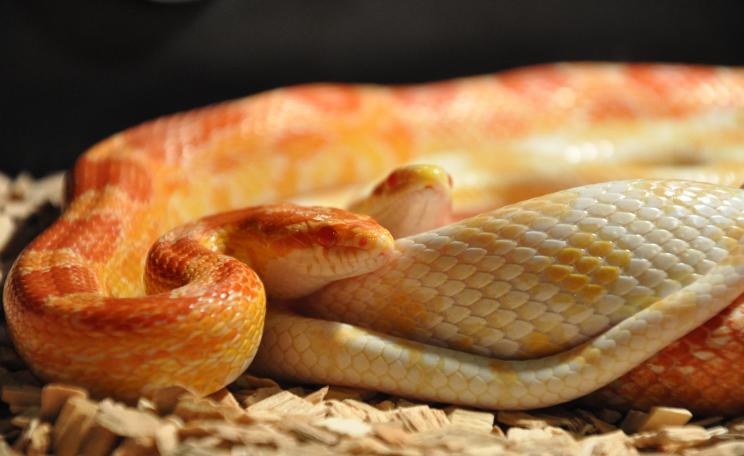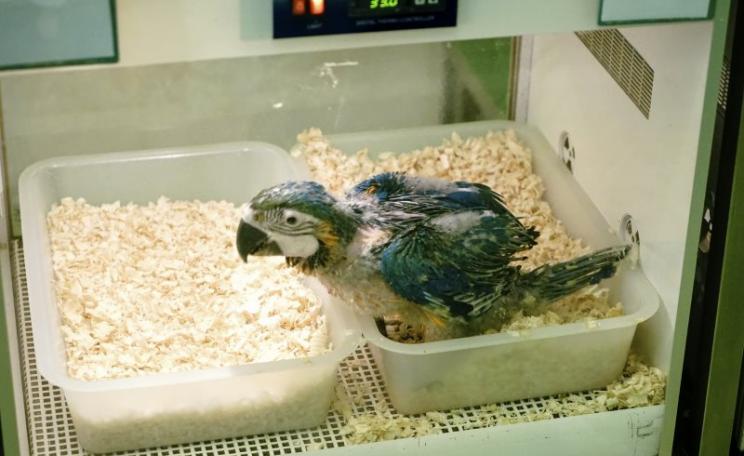-
It's easy to believe that existence in nature is riddled with suffering and misery. We see as much in a myriad of beautifully made wildlife films, as one animal is eviscerated live by another or desiccated by its environment.
A new television series called Hostile Planet has just launched, ‘reminding audiences’ that life in the wild is 'brutal, tough and unforgiving' - in other words ‘cruel’. But is it?
An undercurrent of scientific thinking reveals that biological strategies’ - behavioural toolboxes and physiological chemistry sets - may provide organisms with the kindness they need, when they need it most.
Coping mechanisms
It's important to distinguish between naturally occurring pain that has evolved to serve the minds and bodies of animals, and the mindless suffering and misery inflicted on animals and people in industries, homes and practices of the ‘civilised’ world.
There is arguably a dynamic of pain and stress versus suffering and misery. It's not being argued here that pain and stress in nature are ‘good’, but that in their proper context they are servants for the welfare and survival of the individual.
Nature has many coping mechanisms for dealing with positivity and negativity. Coping mechanisms are ‘biological strategies’ evolved to maintain and serve an individual’s health, welfare and survival – they make pleasure possible and rush to the rescue during battle, deprivation, disease and injury.
Biological strategies operate at both the macro-level – e.g. drives states such as foraging, acquiring favoured foods, reproduction, exploration and play, and at the micro-level – e.g. dopamine, serotonin, oxytocin, endorphin, adrenaline, and cortisol.
Singly or in partnership these behavioural and physiological features work for the good of the individual either by providing good or bad feelings as incentives or disincentives at the right time and place.
Fight, flight, freeze
Very roughly, when an individual is faced with traumatic adversity, stress-relievers such as endorphin help to ease them through an acute crisis; dopamine, serotonin and oxytocin regulate a positive mental attitude; and cortisol helps manage a stressful time or disease.
Might these mechanisms act within an evolved system of incidental compassion to filter-out unnecessary suffering and misery in the face of otherwise unbearable psychological and physical pressure?
Suffering and misery for the prey makes no sense. Consider the implications of the well-known ‘flight, fight, freeze’ responses.
Flight implies an arguably optimistic mindset of being able to outrun an assailant; fight implies an arguably optimistic mindset of being able to beat an assailant; freeze implies an arguably optimistic mindset of escaping notice.
But where’s the ‘arguably optimistic’ mindset of the captured and doomed prey? There probably isn’t.
Shock and awe
However, in the natural world, prey such as ungulates attacked by big cats may be disemboweled while showing passive resistance. A human swimmer may lose their feet to shark bite yet fail to realise the loss until safely on land.
In both cases ‘shock and awe’ are loosely held to account for these apparent desensitised states. For survivors, pain will set in once the victim is away from the offender, and in such situations pain will now work as an ally – issuing notice as to the damage done and what body parts need attention.
Suffering and misery are unhelpful. Within the animal kingdom, many strategies exist where anti-predator responses (e.g. avoidance, misdirection and defence) serve to protect an individual or group from harm.
The chase and kill of the predator-prey battle is usually swift: a predator that makes a meal of getting a meal is likely to either lose it or be potentially injured by the resisting assailant. Humaneness works better than cruelty.
Injuries are typically met with pain rather than sickness – no point feeling unwell and losing out on important calories for healing by not eating, and the organism usually has one or more spare limbs to move around on. A sprained foot benefits from disuse (behavioural limping strategy) - imposed rest, ordered by nature’s doctor.
Environmental deprivations
Now think about disease – e.g. a gut infection – for which fever, vomiting, diarrhoea and nausea are some staple strategic features. Being ill promotes malaise, malaise means less activity - conserving energy for recovery.
Fever raises immune-competence, and higher temperatures hinder microbial growth. Vomiting, diarrhoea and nausea eject unwelcome contaminants from bodies as well as dissuade consumption of anything else that might be responsible for the current sickness.
Suffering and misery are in no one’s interest. As indicated earlier, whether as an impetus to rest an injured foot or as a rapid learning system and deterrent against future harm, and many other scenarios, pain is an evolved mechanism to serve wellbeing.
When the purpose of pain has been stimulated certain relieving mechanisms quickly enact generating mind-numbing biochemistry and possibly also positive mental states where environmental deprivations such as drought and starvation occur – thus motivating survival.
Physiological, behavioural and psychological states arguably constitute inherent and learned ‘biological optimism’ to imbue nature’s lost, hungry, attacked, injured, and diseased charges with overriding ‘positive mental attitude’ and relief from severity.
Suffering costs
Suffering and misery are expensive. Severe stress, pain, suffering and misery have significant energetic costs as multiple complex processes must be engaged and regulated.
When animals or people get sick, our bodies commonly both utilise greater calories addressing stressors (e.g. raised immune competence, fever) and refrain from calorie intake (e.g. avoid acquiring any further pathogens) thus redirecting conserved energy into healing.
Why would nature’s dynamics, with an inherent emphasis on energy conservation, accommodate suffering and misery?
Nature favours efficiency, efficiency favours entropy, entropy implies humaneness. Pointless pain and misery would seem an inefficient use of nature’s resources. The elements that safeguard welfare have evolved over countless millennia and are present throughout the animal kingdom, indeed from amoeba on ‘up’.
Why would these many fundamental biological strategies simply abandon an individual at its greatest time of need?
Human interference
Before anyone thinks that natural stress- and pain-relievers pave a way for human justification of conscience to mistreat animals, think again.
The synergism of physiology, behaviour and psychology in nature variously configures to benefit animals across the expansive raft of ecologies worldwide; in captivity - under human control - the finely balanced machinery of incidental compassion becomes progressively and catastrophically altered or degraded.
Tragically, natural welfare-oriented protections are stripped away by human control as all too often animals in our care are separated from the ‘proper order of things’ and left to endure incarceration or abuse in environments of our making and our failure.
Humans isolate animals away from a world where stressors - whether perceived or real - are carefully managed against a background of normality. We see simplicity where really there is complexity.
Humans are flies in the ointment. We place or breed animals into an alternative reality - a reality where stress, pain, deprivation and, yes, real suffering can flourish against a background of abnormality.
Ecological context
Whatever name one puts to it, nature most definitely has systems for promulgating biological optimism and reducing stress and pain when required.
All too often humans fail to respect how ecological norms actually work, and work well. It makes sense that under natural conditions and within their proper ecological context the systems of evolved incidental compassion ought not to fail the individual– the very target for welfare - whether during day to day stresses or in their darkest hours.
In nature stress and pain are peripheral parts of a life that is ‘going right’. In captivity suffering and misery become central parts of a life that is going wrong - nature’s humaneness spoiled by the hand of ‘humanity’.
This Author
Clifford Warwick is a biologist and medical scientist, author of around 150 scientific articles, books, and book chapters, and an investigator of anthropogenic impacts on wild animals.







